Few people think of history when crossing a bridge. But bridges tell an important story about engineering and technology, especially in Pennsylvania where the early years of iron, steel and concrete came together to produce many early bridges that represent an age of experimentation.
An age of experimentation is identified as a time when builders experimented with different materials and designs to build longer and stronger bridges. While it may be easy to see the significance of a large, monumental bridge, smaller bridges are often overlooked. However smaller bridges, like the reinforced concrete thru girder bridge, also play an important part in the engineering and technological story and represent experimentation using reinforced concrete.
Reinforced concrete was a relatively new technology when thru girders were first developed. The development of concrete and steel reinforcement, also known as rebar, were two separate technologies that came together to produce this type of bridge.

The reinforced concrete thru girder was a common bridge design for shorter spans, usually 50 feet or less, and was at its highpoint of construction from 1910 through 1920. The bridges are composed of monolithic girders with a deck slab connected by steel reinforced bars. The roadway passes between the girders, which serve as parapets as well as the main supporting members.
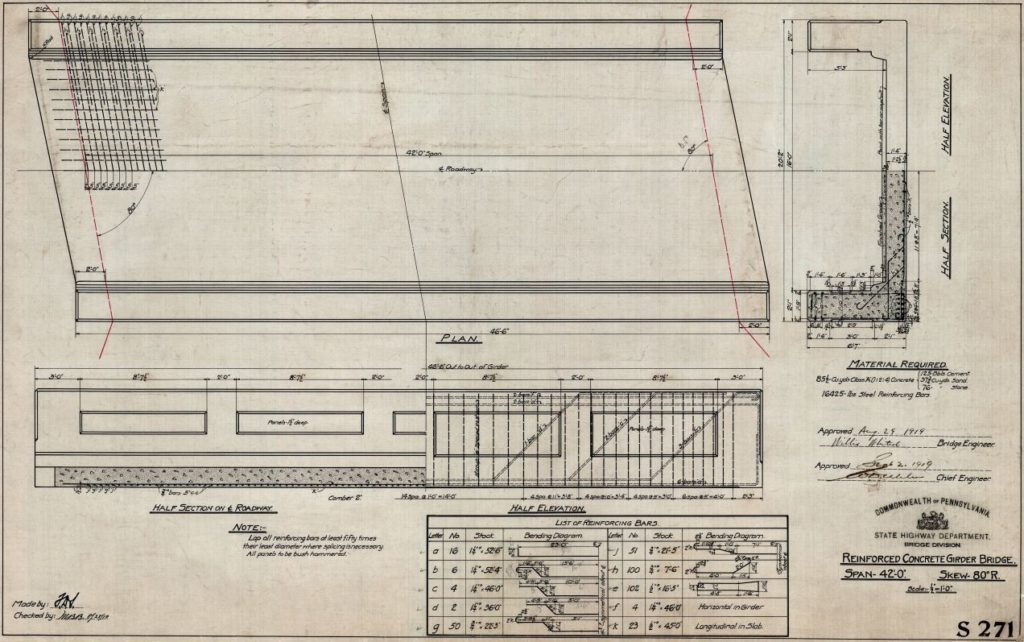
The parapets are usually quite large and typically have deep inset panels. These panels not only serve as a decorative feature but are important in the design of the bridge as they use less concrete and conserve weight, thereby reducing the dead load of the bridge. They are often confused with slab bridges which look the same but do not have the integral slab and girder connection.

Concrete thru girders by nature are narrow and their integral slab and girder system is problematic as they cannot be widened. Due to their short span, narrow width, and inability to be altered, the reinforced concrete thru girder bridge type quickly fell out of favor and was one of the least successful reinforced concrete bridge types developed, although, a select few Pennsylvanian bridge engineers favored the bridge for shorter county roads. Frank H. Shaw, bridge engineer for Lancaster County, was one of these engineers, and a number of reinforced concrete thru girder bridges are found in the Lancaster area.
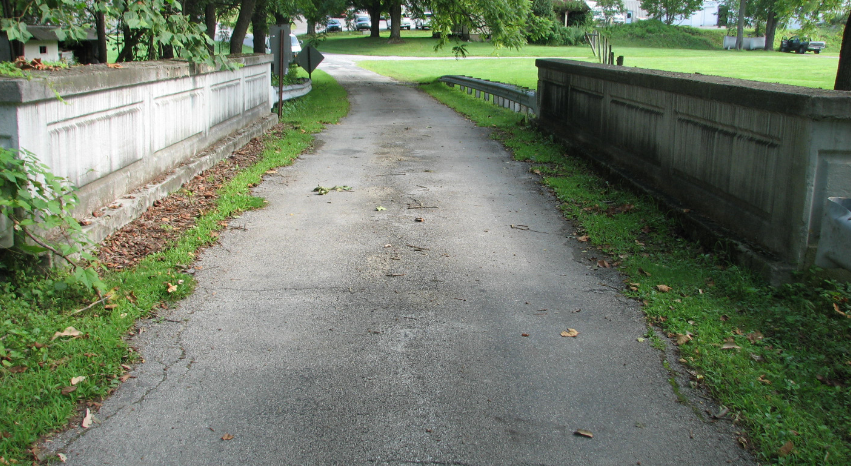
The PennDOT Historic Bridge Inventory and Evaluation, one of the earliest comprehensive inventories of historic highway bridges in the country when it was completed in 2001, identified 90 reinforced concrete thru girder bridges, six of which were eligible or listed in the National Register of Historic Places. In the 21 years since this survey, over half the population of reinforced concrete thru girders have been lost including two National Register eligible bridges.
Because of this loss, the Pennsylvania Department of Transportation (PennDOT) and the Pennsylvania State Historic Preservation Office (SHPO) formed a committee to reevaluate the remaining population of reinforced concrete thru girders. A point system, similar to that used in the reevaluation of the metal truss bridges and concrete arch bridges was developed in an effort to objectively look at the remaining population of reinforced concrete thru girders.
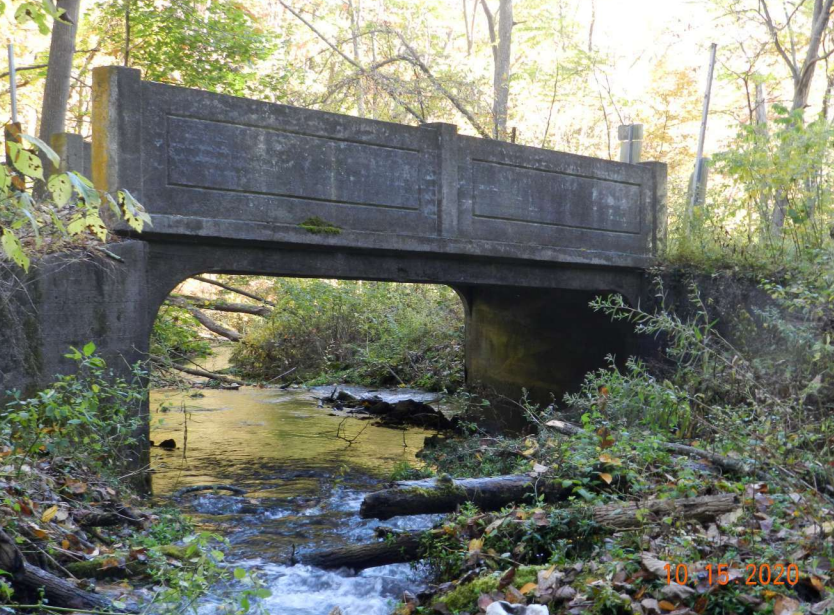
Like the previous reevaluations, the point system provides a consistent application of the National Register Criteria for evaluation, awarding points to early and rare bridges and bridges with distinctive characteristics, special features, and/or innovations, while subtracting points for loss of integrity of materials, workmanship and design. Bridges that obtain a minimum threshold of points are considered eligible for listing in the National Register of Historic Places.
This effort evaluated bridges for National Register significance under Criterion C for engineering significance or relative to having high artistic value. The reevaluation identified 41 remaining reinforced concrete thru girder bridges in the state and recommended 11 bridges as eligible for listing in the National Register of Historic Places. Click here to read the full methodology, which was finalized in December 2021, and see all the reinforced concrete thru girder bridges recommended National Register eligible.
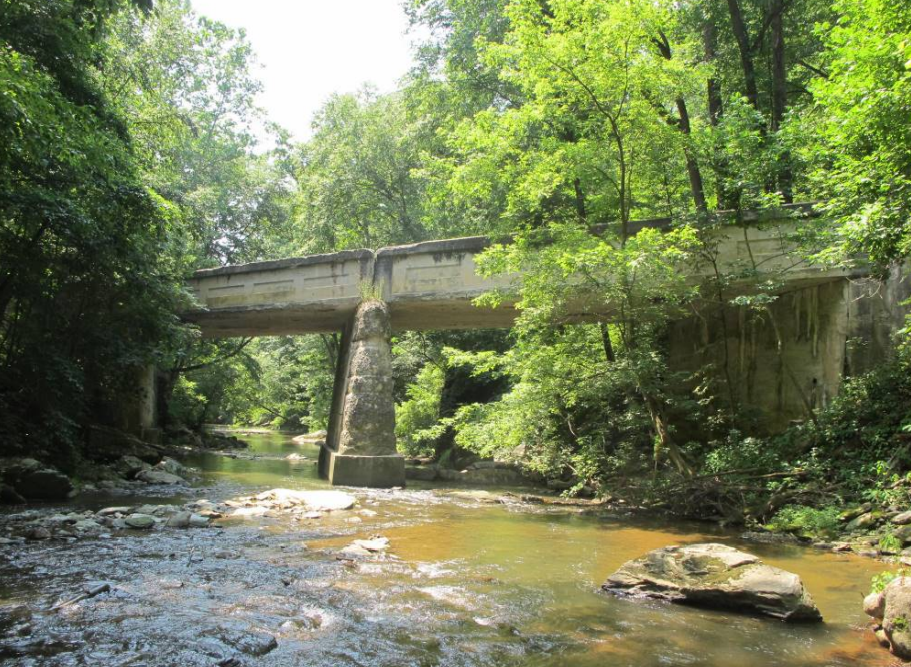
Although its period of use was brief, the reinforced concrete thru girder design made a contribution to the highway system of the Commonwealth in the early twentieth century. The next time you are out driving, take notice of the small bridges you cross. You might be crossing a piece of Pennsylvania’s engineering and technology history!
Comment Policy
PHMC welcomes and encourages topic-related comments on this blog. PHMC reserves the right to remove comments that in PHMC’s discretion do not follow participation guidelines.
Commenters and Comments shall be related to the blog post topic and respectful of others who use this site.
Commenters and Comments shall not: use language that is offensive, inflammatory or provocative (this includes, but is not limited to, using profanity, obscene, or vulgar comments); disparage other commenters or people; condone illegal activity; identify the location of known or suspected archeological sites; post personal information in comments such as addresses, phone numbers, e-mail addresses or other contact details, which may relate to you or other individuals; impersonate or falsely claim to represent a person or an organization; make any commercial endorsement or promotion of any product, service or publication.
If you would like to comment on other topics not related to this blog post but related to PHMC, please fill out the PHMC Contact Us Form.
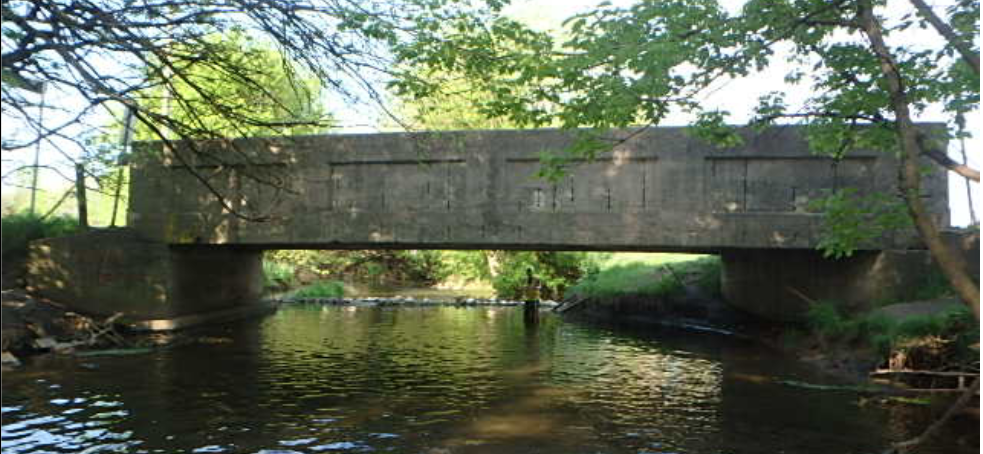
Leave a Reply